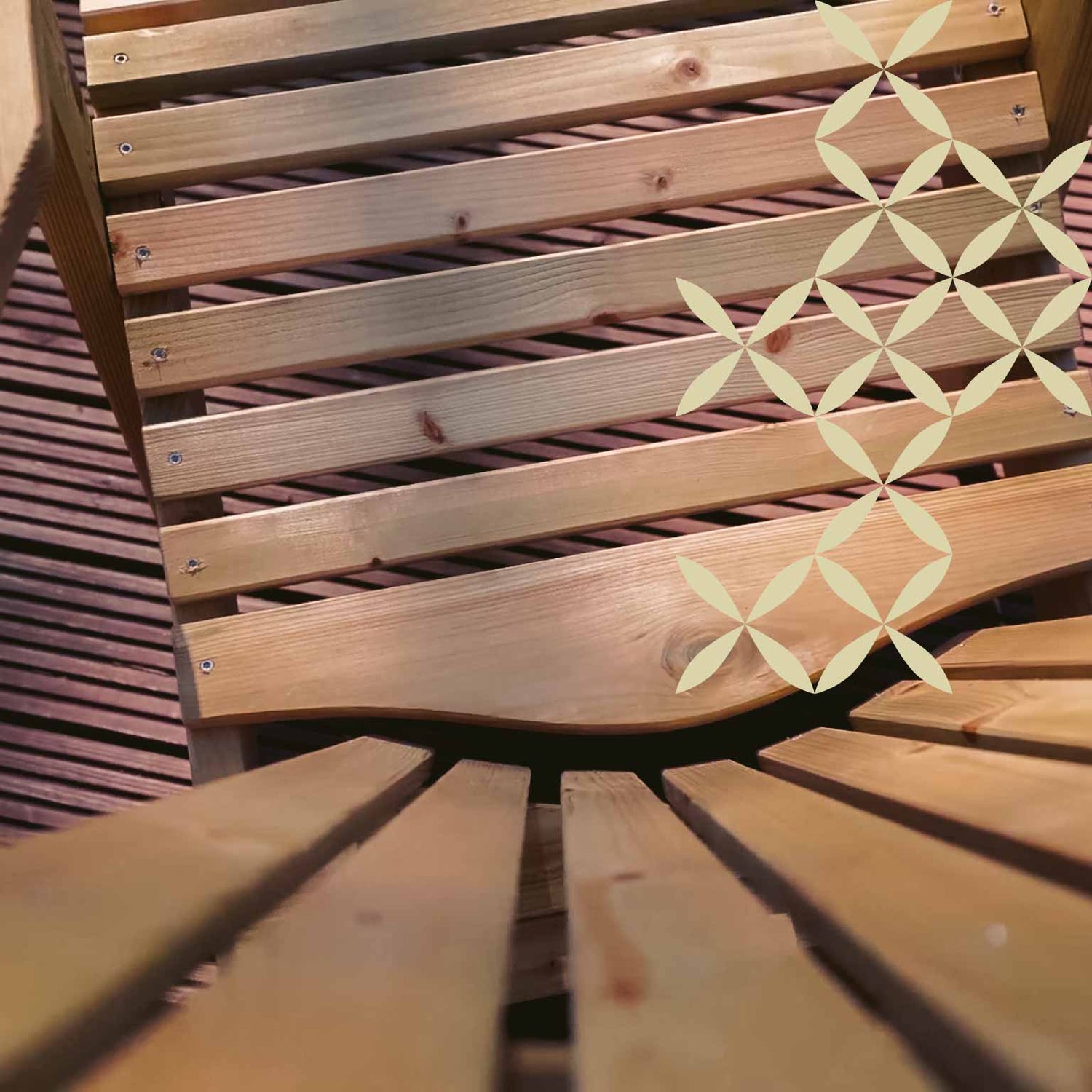Some might consider these inconveniences of the furniture, but we see them as unique and distinguished characteristics only the most natural furniture has. We're choosing to honor our local wood's uniqueness instead of transforming it into unrecognizable mass-production pieces. With proper maintenance, these pieces will last a lifetime, carrying out their legacy by giving people moments of togetherness outdoors.

Wood furniture characteristics.
Mastering and celebrating live wood's unique features with each piece of furniture we craft.
Wood is a living, breathing material that responds to its environment. During dry weather, you may notice cracks or tears in the planks, which typically disappear when conditions become more humid. Certain perceived "flaws" in wood are entirely normal and accepted within industry standards. Therefore, the following non-conformities are acceptable as they fall within industry-accepted occurrences.
-

Blue spots
We treat our timber with a premium impregnating agent, offering robust protection in outdoor conditions. Mold or blue spots on the wood's surface are within acceptable parameters.
-

Uneven textures
Every piece of wood is unique, with different colors and textures from when a tree grows. When turned into furniture, these unique traits stay the same, affecting the timber's color and how painted finishes appear.
-

Wood twisting
It is normal for the wood to swell when exposed to moisture. Under certain conditions, the original shape of wooden products can be slightly altered or even warped.
-

Wood knots
The structure of the wood, the location of branches, and the growth rings in cross-section are always different, depending on the type of wood and its characteristics. This gives the wooden product its natural appearance.
Word from the founder
-

Wooden cracks
Due to UV rays, wood can experience a maximum deformation of up to 0.8% of its original length. Cracks can appear in furniture as it ages, and while processing the timber can minimize them, we can't completely prevent them.
-

Rough edges
We kiln-dry our timber to achieve 18-22% moisture levels before treatment. While we strive for smooth finishes across our products, some kiln-dried timber may retain rough surfaces due to its natural appearance.
-

Resin pockets
Wood is a living material that retains its natural characteristics long after becoming garden furniture. Therefore, the appearance of resin "pockets" is inevitable, especially in warm weather or under direct sunlight.
-

Fading color
Wood naturally turns gray when maturing. This color is not a defect in the product, and it is not a weakness. The Picnic Table shown here is 15 years old and still strong despite its gray appearance.















